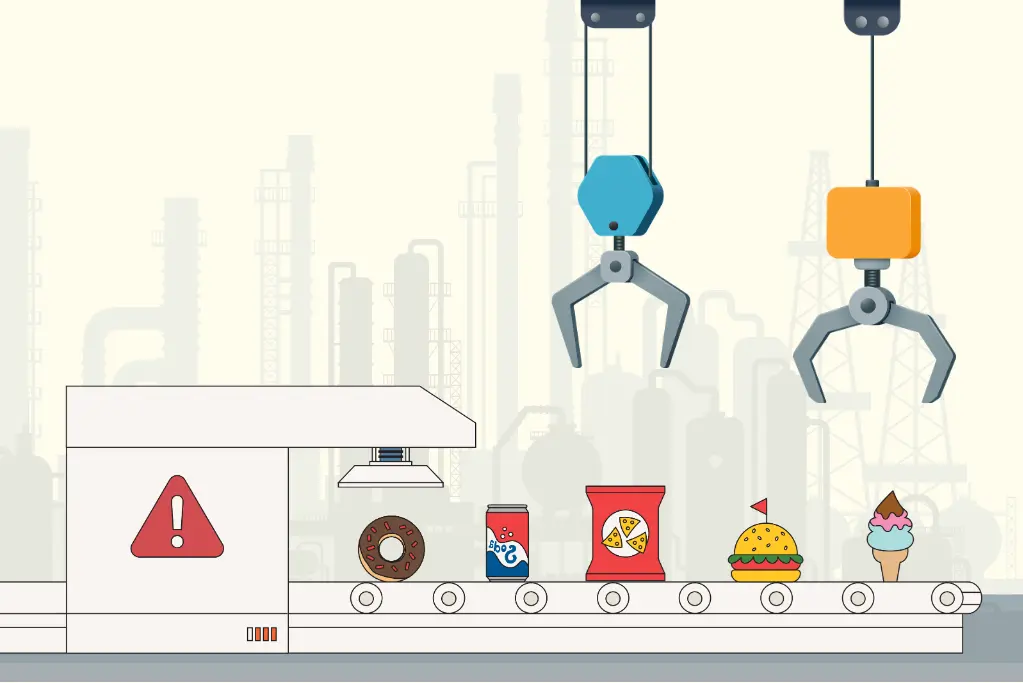News & Articles

Understanding Ultra-Processed Foods and Their Health Risks

Not all processed foods are bad, but ultra-processed foods (UPFs) are drawing increasing concern from health experts. Find out what UPFs are and the health risks they pose, and how can you make smarter food choices.
Q1 I HAVE BEEN HEARING ABOUT PROCESSED AND ULTRAPROCESSED FOODS (UPFS). WHAT IS THE DIFFERENCE?
From bread to sausages, almost all the food we consume has undergone processing. However, the main difference between processed food and UPFs is the amount of processing the food has undergone and the ingredients used.
In processed foods, the original food can still be recognised. Think of canned tuna in olive oil. Tuna flakes, which are minimally processed, are soaked in olive oil, a processed culinary ingredient. Adding processed culinary ingredients like oil, salt, and sugar, can help improve the shelf life of food, and in some cases, enhance the nutrition, such as adding calcium to dairy alternatives.
UPFs, on the other hand, have undergone industrial processes such as hydrogenation. Industrial ingredients like food additives and modified starches are also added to improve the appeal to consumers. You often cannot tell by looking at the food what original produce it came from.
Q2 ARE ULTRA-PROCESSED FOODS REALLY LINKED TO AN INCREASED CANCER RISK?
It is hard to pinpoint the relationship. There are more and more studies that show an association of increased intake of UPFs with an increased risk of cancer.
Nonetheless, UPFs are generally unhealthy foods which are usually high in fat, sugar, and salt. They are low in nutrients since industrial processing usually destroys the nutrients in the original foods.
Frequent consumption can lead to health issues like obesity, which is associated with increased cancer risk, including breast, colon, and liver cancer. People who have a high intake of UPF may also have a diet that is low in fresh fruits, vegetables, and wholegrains, which is another cancer risk factor.
Q3 HOW DO I IDENTIFY WHAT IS A UPF?
Firstly, think about the origins of the food. Be it cow’s milk or goat’s milk, we know that cheese comes from milk. On the other hand, most crab sticks, though having crab in their name, are usually made of white fish meat with many additives. So, if you cannot tell by looking what food sources were used to make the product, chances are it is a UPF.
Secondly, look at the ingredient list. UPFs tend to have a long ingredient list.
Thirdly, unfamiliar names on the ingredient list could indicate that the product is a UPF. Food additives such as artificial food colouring, preservatives, and sweeteners are often added to UPFs.
Q4 I WAS TOLD UPFS INCLUDE SOME OF MY FAVOURITE FOODS LIKE ICE CREAM AND CHOCOLATE, AND EVEN BREAKFAST CEREALS AND FRUIT-FLAVOURED YOGHURTS. AREN’T SOME OF THESE FOODS SUPPOSED TO BE HEALTHY?
Not all UPFs are the same. For example, fruit-flavoured yoghurts are classified under UPF as companies may substitute real fruit with fruit syrups or flavourings. But there are also yoghurts made with real fruits. To preserve the taste of real fruit, however, additives are often added, thus making the final product a UPF. In this case, adding food additives does not really change the nutritional value of the yoghurts.
Similarly, breakfast cereals are considered UPFs due to additives such as barley malt extract. But cereals also provide fibre and micronutrients in the diet.
On the flip side, UPFs like potato chips and candies are high in saturated fats, sugar, and sodium while providing little to no nutrients. They are often high in calories and fill you up, leaving less room for nutrient-dense foods. These are UPFs we should avoid.
Q5 HOW CAN I REDUCE MY UPF INTAKE, AND WHAT ARE HEALTHY ALTERNATIVES FOR THE FOODS I LISTED ABOVE?
Start slowly. Focus on consuming more whole foods or foods that are minimally processed. You can also gradually swap UPFs in your diet for healthier alternatives.
For example, instead of getting fruit-flavoured yoghurt, add your own fruit to plain yoghurt. Switch up your breakfast cereals with oatmeal or chia seed puddings. Opt for dark chocolate instead of milk or white chocolate for the higher cocoa content.
It is fine to eat some UPFs in moderation. Just be mindful of convenience foods, read the labels before buying, and choose whole food where possible (for instance, take an apple over apple juice!).
| POSTED IN | Nutrition |
| PUBLISHED | 01 September 2025 |
